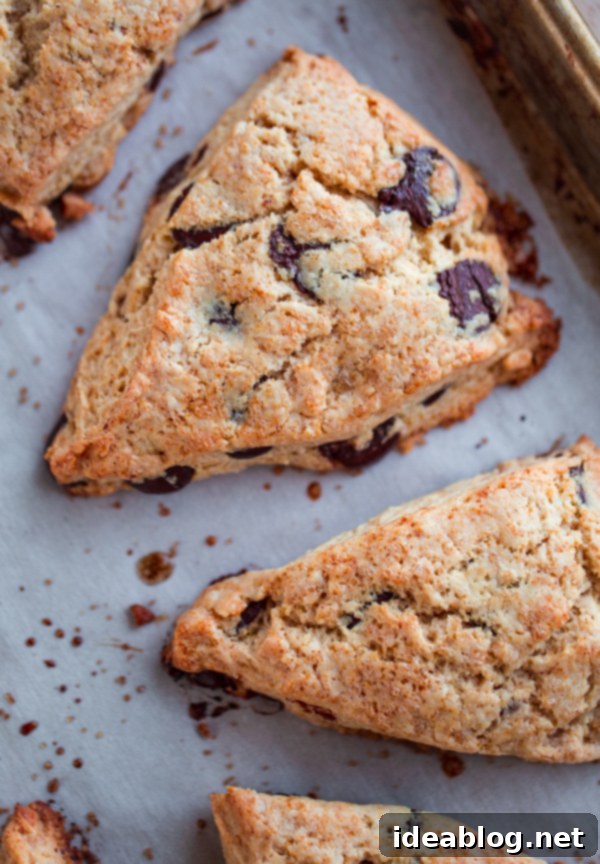Brown Butter Chocolate Chip Scones: The Ultimate Flaky Homemade Treat
Experience the unparalleled joy of homemade flaky scones, crafted with the rich, nutty depth of brown butter, generously studded with delectable chocolate chips, and crowned with a luscious brown butter glaze. These scones are more than just a baked good; they are a culinary celebration, offering a perfect balance of tenderness, flavor, and delightful texture in every single bite.
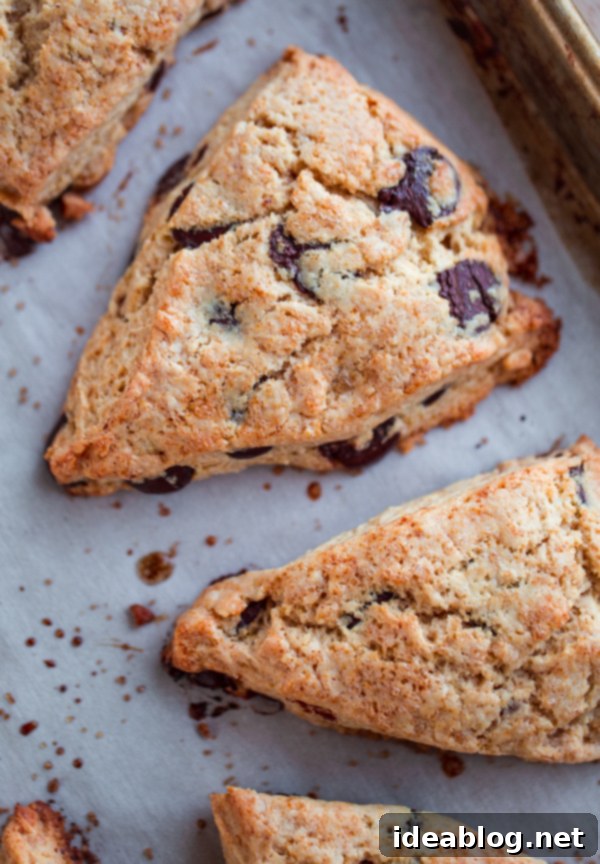
The culinary world often highlights certain ingredients that, once discovered, completely transform the way we approach baking. Brown butter is undeniably one of these game-changers. Its rich, toasted, and intensely nutty aroma elevates simple butter into a gourmet ingredient, capable of imparting profound depth to virtually any baked good. After delving into the complexities of clarified butter, ghee, and brown butter, it became clear that integrating this liquid gold into a scone recipe was not just an option, but a delightful inevitability. These brown butter chocolate chip scones stand as a testament to the ingredient’s power, offering an exquisite flavor profile that will captivate your taste buds.
The Unmistakable Allure of Brown Butter in Baking
Brown butter, known in French as “beurre noisette,” is a cornerstone of sophisticated baking. It’s created by gently cooking unsalted butter until its milk solids caramelize and turn golden brown, releasing a captivating, nutty fragrance that is often compared to hazelnuts. This transformation adds layers of complexity, a subtle sweetness, and an unparalleled richness that regular butter simply cannot provide. When infused into scone dough, brown butter doesn’t just add flavor; it contributes to an exceptionally tender crumb and creates an aromatic experience from the moment it hits the oven. The interaction between the toasted notes of the butter and the sweet, slightly bitter chocolate chips is a symphony of flavors that truly sets these scones apart.
A Timeless Treat: Enjoy These Scones Year-Round
While some culinary creations are intrinsically tied to specific holidays or seasons, these brown butter chocolate chip scones defy such limitations. Forget the fleeting trends of themed treats or the reliance on artificial colors for festive appeal. These scones are about pure, authentic flavor derived from high-quality ingredients, making them a perfect indulgence for any day of the year. Unlike novelty baked goods that might only find their moment during a specific celebration, the comforting warmth and sophisticated taste of these scones are always in season. Whether it’s a bright summer morning, a crisp autumn afternoon, a cozy winter evening, or a refreshing spring brunch, these scones are guaranteed to bring joy and a touch of elegance to your table. Prepare to find yourself reaching for this recipe again and again, solidifying its place as a beloved staple in your baking repertoire.
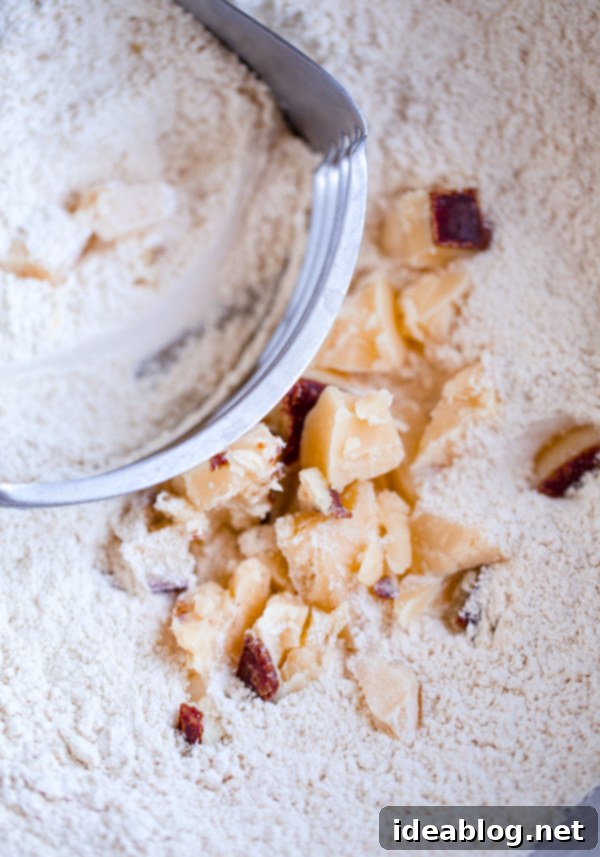
What truly elevates these scones beyond a simple pastry is their remarkable texture and profound flavor. Each scone boasts an incredibly flaky exterior, giving way to a light, tender interior that seems to melt delightfully in your mouth. They are robustly flavored with the deep, caramelized notes of brown butter and generously studded with rich, gooey pockets of semisweet chocolate. Even those who consider themselves scone skeptics often find themselves unexpectedly charmed, perhaps even “weak at the knees,” by this particular recipe. The combination of premium brown butter and high-quality chocolate, enveloped within a perfectly baked scone, creates an experience that is both comforting and extraordinarily satisfying.
Demystifying Scones: Cream vs. Buttermilk Varieties
To truly appreciate the artistry behind these pastries, it’s helpful to understand the fundamental differences in scone preparation. Broadly, scones fall into two primary categories: cream scones and buttermilk scones. Buttermilk scones typically combine butter with tangy buttermilk, resulting in a scone that is often described as lighter, fluffier, and more akin to a biscuit in texture, characterized by pronounced, distinct flaky layers. Their slight tang adds another dimension to their flavor profile, making them a popular choice for savory applications or with fruit preserves.
Our brown butter chocolate chip scones, however, are a classic example of cream scones. They utilize a rich combination of butter and heavy cream. This method generally produces a scone with a slightly denser, yet incredibly tender and fine crumb. While the term “denser” might sometimes imply a heavy result, in the context of a well-made cream scone, it signifies a wonderfully rich mouthfeel and a delicate, almost cake-like consistency that still retains an impressive flakiness. These particular scones brilliantly defy any perceived heaviness. To further enhance their textural lightness and add an intriguing depth of flavor without compromising their delicate structure, we’ve ingeniously incorporated whole wheat pastry flour into the mix.
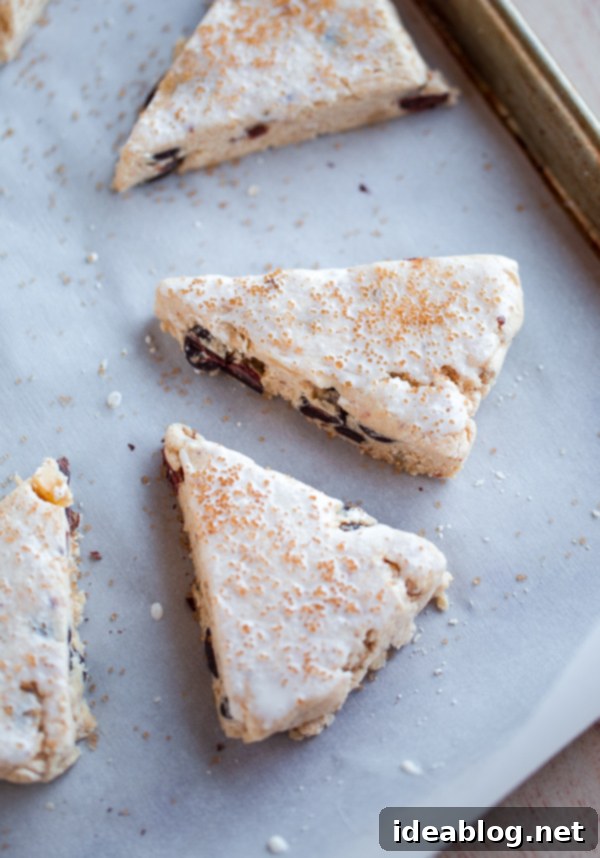
The Subtle Sophistication of Whole Wheat Pastry Flour
The inclusion of whole wheat pastry flour is a thoughtful addition that significantly contributes to the unique character of these scones. Unlike standard whole wheat flour, which can sometimes lead to a tougher, heavier crumb due to its higher protein content, whole wheat pastry flour is milled from soft wheat. This results in a lower protein percentage, making it ideal for tender baked goods like pastries and cakes. In this scone recipe, it performs beautifully, contributing a nuanced, wholesome undertone that perfectly complements the robust brown butter and sweet chocolate. What’s more, it achieves this without imparting any perceived heaviness or altering the desired light, delicate texture. Many who taste these scones wouldn’t even detect the whole wheat, demonstrating its seamless integration and the enhanced complexity it brings to the overall flavor profile.
A Double Infusion: Brown Butter in Dough and Glaze
Creating these exquisite scones requires a small but rewarding investment of time: browning the butter and allowing it to chill completely. This crucial preparatory step is truly worth the effort, and we believe in maximizing its delicious return. To ensure every element of these scones sings with that irresistible nutty flavor, the fragrant brown butter is integrated in not one, but two delightful ways.
Firstly, the traditional butter in the scone dough is entirely replaced with cold, cubed brown butter. This strategic substitution ensures that the deep, caramelized notes are thoroughly woven into the very structure of the scone. As the dough bakes, the cold butter creates pockets of steam, resulting in the signature flaky layers, while its browned essence permeates every crumb, delivering an unparalleled aroma that will fill your kitchen with warmth and anticipation.
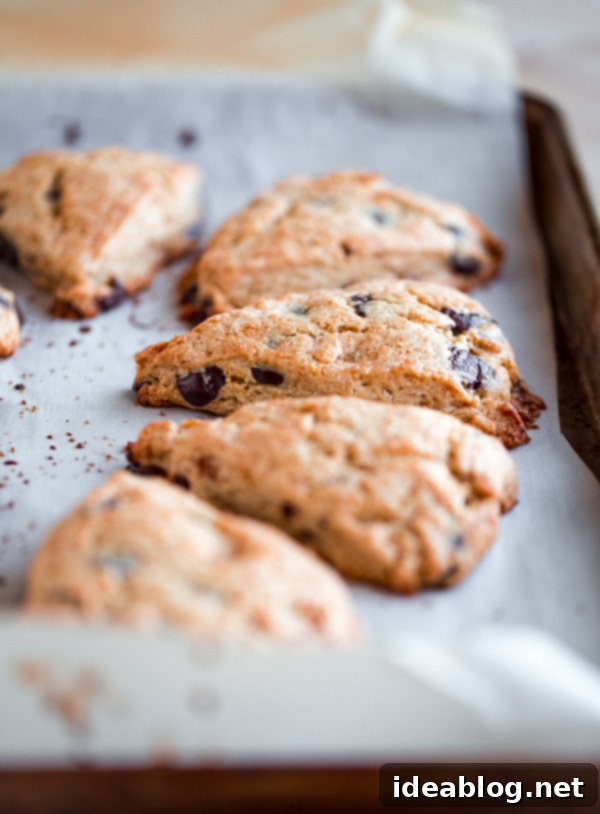
Secondly, a generous tablespoon of melted brown butter is skillfully incorporated into a quick and easy powdered sugar glaze. Once your perfectly baked scones have cooled to room temperature, a generous drizzle of this rich glaze adds a final, tantalizing flourish. This step is entirely optional, but for those who desire an extra layer of sweetness and a more pronounced brown butter “punch,” it is highly recommended. The smooth, glossy glaze not only enhances the visual appeal but also provides another dimension of flavor and moisture. Both the glazed and unglazed versions of these scones are equally beloved, allowing for delightful customization based on your personal preference. If you prefer a pastry that is slightly less sweet or want to savor the pure scone flavor, feel free to skip the glaze. Or, for a delightful compromise, prepare a half batch of the glaze and adorn only a portion of your scones, offering a lovely variety for sharing or personal enjoyment.
A Critical Note on Measuring Brown Butter
*Important Note for Success: Please pay extremely close attention to the recipe’s instruction to use five tablespoons of browned butter. It is crucial to understand that this is not equivalent to browning five tablespoons of regular unsalted butter. During the browning process, butter loses a significant amount of its water content through evaporation, and its milk solids toast. This results in a substantial decrease in volume, typically around 25%. To ensure you have the precise amount of browned butter needed for the scone dough, we strongly advise starting with at least 1½ sticks (approximately 8 ounces or 230 grams) of unsalted butter to brown initially. This margin of safety ensures you won’t run short in the middle of preparing your dough. Any leftover browned butter is a wonderful asset to keep in your fridge for future culinary endeavors! For the highest degree of accuracy, especially with an ingredient as crucial as browned butter, using a digital kitchen scale to weigh the cold, solidified brown butter is highly recommended. This precision will contribute significantly to the consistent success and exceptional flakiness of your scones.
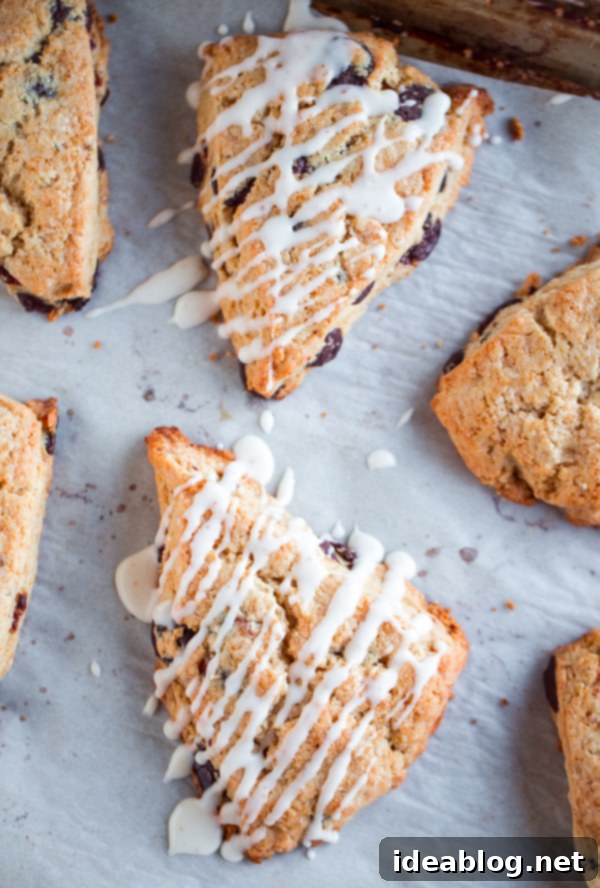
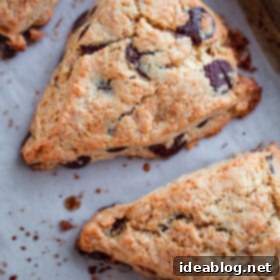
Brown Butter Chocolate Chip Scones
Pin
Review
SaveSaved!
Equipment
-
Half Sheet Pan
-
Natural Parchment Paper
Ingredients
- 1 cup (120 g) unbleached all-purpose flour
- 1 cup (120 g) whole wheat pastry flour
- 2 tablespoons (24 g) granulated sugar
- 1 tablespoon baking powder
- ½ teaspoon kosher salt
- 5 tablespoons (75 g) cold brown butter, cut into cubes see recipe notes for instructions
- ½ cup (80 g) semisweet chocolate chips
- 1 cup (240 mL) cold heavy cream plus more for brushing
- 1 teaspoon demerera or turbinado sugar for sprinkling
Brown Butter Glaze (Optional):
- ¾ cup powdered sugar
- 1 tablespoons + 2 teaspoons whole milk
- 1 tablespoon brown butter melted
- ⅕ teaspoon vanilla extract
- small pinch of kosher salt
Instructions
-
Preheat your oven to 425°F (220°C) with a rack positioned in the center. Prepare a baking sheet by lining it with parchment paper or a silicone baking mat, then set it aside.
-
In a large mixing bowl, thoroughly whisk together the unbleached all-purpose flour, whole wheat pastry flour, granulated sugar, baking powder, and kosher salt. Using a pastry blender (or your fingertips), cut the cold, cubed brown butter into the dry flour mixture until the butter pieces are no larger than the size of a small pea. Gently stir in the semisweet chocolate chips. For best results, place the entire bowl into the freezer to chill for 5 to 10 minutes; this helps keep the butter cold and promotes flakiness.
-
Remove the bowl from the freezer. Create a well in the center of the dry ingredients. Pour in 1 cup (240 mL) of cold heavy cream. Using a fork, gently stir the cream into the dry ingredients until the dough just barely comes together. Avoid overmixing to prevent tough scones.
-
Carefully scrape the scone dough onto a clean, lightly floured countertop. Knead the dough very gently for only 5 to 10 seconds—just enough to bring it together. Pat the dough into a uniform 7-inch disc, approximately ¾-inch thick. Using a sharp knife or a bench scraper, cut the dough into six equal wedges. Transfer these wedges onto the prepared, lined baking sheet. Using a pastry brush, lightly brush the tops of the scones with a little extra heavy cream. Finish by sprinkling the tops with demerera or turbinado sugar for a lovely crunchy crust.
-
Bake the scones in the preheated oven for 12 to 16 minutes, or until their tops are beautifully golden brown and they are cooked through. Once baked, allow the scones to cool on the baking sheet for 5 to 10 minutes to set, then carefully transfer them to a wire cooling rack to cool completely before glazing.
-
Prepare Glaze (Optional): In a medium bowl, whisk together the powdered sugar, whole milk, melted brown butter, vanilla extract, and a small pinch of kosher salt until smooth and pourable. Using a spoon, generously drizzle the glaze over the tops of the completely cooled scones. Allow the glaze to set completely for about 15-20 minutes before serving, though they are delicious even with a slightly soft glaze.
Recipe Notes:
- This scone recipe calls for 5 tablespoons of browned butter. This is not the same as five tablespoons of unsalted regular butter, browned. Butter volume decreases substantially (generally by 25% in volume) once browned! I recommend browning at least 1½ sticks (8 oz; 230 g) of unsalted butter for this recipe, just to be safe. There is nothing wrong with having a little extra browned butter in your fridge.
- Weighing the brown butter on a scale makes the process much easier and more accurate.
